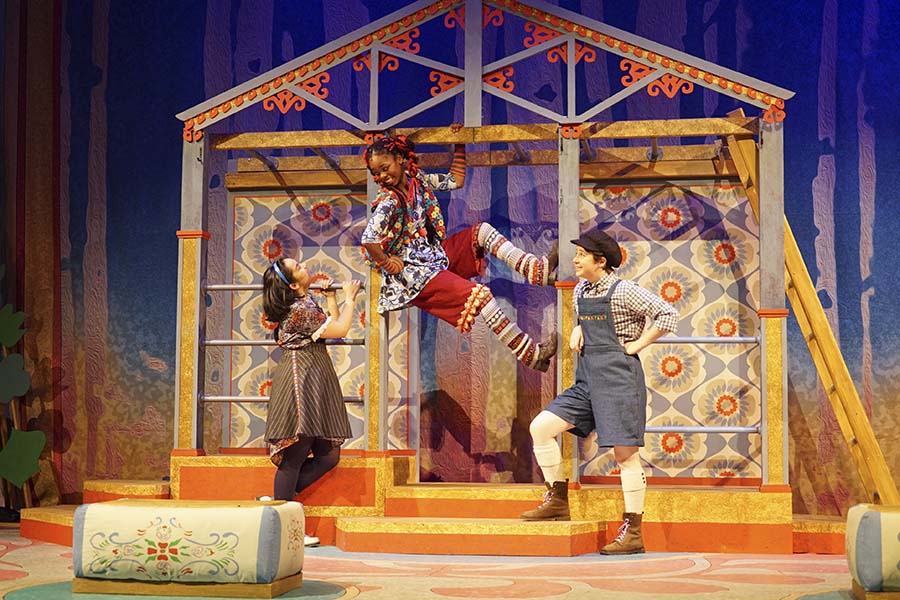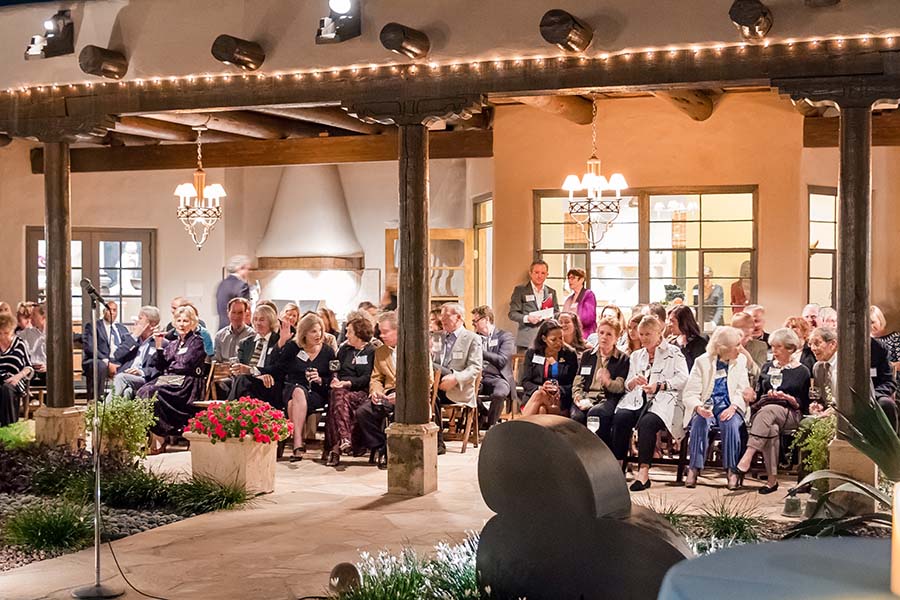Despite the scary headlines, there are some areas of arts funding that are actually looking up right now. The 2015 TCG Theatre Facts survey found that individual donor gifts have grown by almost 33 percent since 2010, and the average individual donation is at a five-year high. Giving USA, an annual report put out by the Indiana University Lilly Family School of Philanthropy, states that individual gifts in the arts, culture, and humanities sector have increased more than 7 percent in the last year—more than almost any sector featured in the report.
Theatres across the country are doing a better job than ever of connecting with audiences and convincing them to invest in their work. But what if most of your audience members are too young to have significant disposable income, or in some cases, can’t even read yet?
“Such a huge percentage of the people we are communicating with are under the age of 10 and therefore not likely donors, although we have received a few contributions out of kids’ allowances which are always really incredible” says Nina Meehan, executive artistic director of Bay Area Children’s Theatre in Oakland, Calif. “You have to reach beyond the folks that are sitting in your audience to a greater pool of potential enthusiasts.”
Theatre for young audiences (TYA) is unique in the arts funding landscape. It serves a population that is completely separate from its donor base, but it can also tap into donors’ nostalgia for their own childhood and make them feel connected to today’s young people, all while striving to provide an arts experience that is high-quality in its own right. TYA can speak to a donor’s past, present, and future, but at the same time, it isn’t really about the donor at all.
“I think that so many times, when people give to TYA theatres, they feel like they’re investing in the next generation of theatregoers, of global citizens,” says Ernie Nolan of Nashville Children’s Theatre. “I’ve been talking a lot about how the theatre believes that the culturally curious child is the future, and a donation to a TYA theatre feels like an investment in the future.”
Formerly the artistic director of Emerald City Theatre in Chicago, Nolan assumed the role of executive artistic director at NCT last month, and notes how his new home’s history and reputation keep the community invested. “I’ve gone from fighting for donor support in a city that’s saturated with theatre companies, to a TYA theatre that is a cultural institution and arts leader in the town,” he says. “People remember how NCT was their favorite field trip, or how excited they were to share NCT with their children or grandchildren. They really harness their own memories, and their own personal feelings about the organization.”
Steve Martin, managing director of Childsplay in Tempe, Ariz., also sees childhood connections play a role at his company. “There are two people on our board who came to Childsplay as kids, and now they have kids of their own,” he says.
Still, Childsplay has had more success with corporate and foundation gifts than in cultivating individual donors. “It’s just difficult to keep people once their children age out of the work you’re doing,” Martin explains. “As far as I’m concerned, we get their disposable income already, just by virtue of their buying tickets, and by the time they have the capacity to give, their kids have aged out.”
In an effort to bring in new donors and re-connect with former ones, Childsplay has started a program called Society for Imagination and Wonder. The program offers members invitations to receptions and members-only events, as well as acknowledgement in newsletters and playbills. Through this initiative, Childsplay has doubled its individual giving every year for the past two years.
“We were able to go back to people who hadn’t given to us in 20 years, but who over the course of their lifetime had given $20,000,” says Martin. “We inducted them into the society as lifetime members, and all a sudden, they started giving again.”

A mix of people with and without children in their lives seems to be a throughline for most TYA donor bases. “We have parents, grandparents and arts and education advocates who are enthusiastic about our mission not for their own families, but for the children of the Bay Area as a whole,” says Meehan from Bay Area Children’s Theatre. “Our board is comprised of all three of these types of supporters. What all of our board shares is a deep commitment to access to the arts for all children.”
Nolan notes that many donors and board members at the TYA theatres he’s worked with over the years are parents, but also stresses how a commitment to education or to the arts in general can move someone to give. “ I’ve seen donors support additional organizations focused on helping children,” he says. “Some TYA companies particularly stress education and literacy, even beyond the art work, I think because so many people think of TYA as having educational roots. I’ve also seen a lot of adults support a TYA theatre along with the ballet and the opera or the symphony, so the TYA theatre almost becomes the one theatre they support as they diversify their giving.”
Like many theatres for adult audiences, TYA companies plan cultivation events and other opportunities to engage with potential donors, often with a kid-friendly twist. “We do small events that are family-oriented,” says Meehan. “For instance, a holiday tea where kids got hot chocolate and adults had tea or coffee, and we had a character from our holiday show stop by to meet the kids. We have also done parallel events for families where we have an adult activity happening in one space with an accompanying kid activity in another room. Both models have been successful for us, although all of these events are donor appreciation events and friend-raising, not ticketed.”
Childsplay has created an event series for members of the Society for Imagination and Wonder that stresses the importance of the arts. Guest speakers have included Disney Theatrical Group president Thomas Schumacher, director Kenny Leon, and science prodigy Jack Andraka. They also recently invited donors to a staged reading of a play for teenagers—an audience Childsplay doesn’t yet reach but hopes to soon. “We invited our members to come and give us feedback, to ask them if the community could get behind this kind of work” says Martin. “We had 80 people show up and they loved participating in the discussion. It was really a significant way to engage them.”
While TYA theatres have some special challenges when it comes to individual giving, the additional creativity and advocacy they’ve had to employ may end up serving them well as the future of other funding sources seems less certain. “Our country is assuming that its citizens will step up and be the ones delivering this work to young people, and I think TYA theatres have the upper hand in making their case,” says Nolan. “We’re so used to proving ourselves time and time again, and talking about ourselves in that way. We’ve done it for parents, for educators. Our audiences are not the ones who hold the pocketbook, so I think that has set us apart.”


